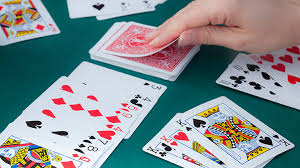Rummy In The Pile Rules, is a popular card game known for its blend of strategy, skill, and chance. One of the key aspects of Rummy gameplay involves managing the draw and discard piles, where players draw cards to form sets and sequences. Understanding the rules regarding these piles is crucial for mastering the game and making strategic decisions. This article will delve into the rules and strategies related to the piles in Rummy, focusing on how to navigate these elements effectively.
Understanding the Piles in Rummy
In Rummy, there are two primary piles that players interact with during the game:
- Draw Pile:
- The draw pile, also known as the stock pile, is the stack of cards that players draw from during their turn. It is placed face down, and cards are drawn one at a time to be added to a player’s hand.
- Discard Pile:
- The discard pile is where players place the cards they choose to discard at the end of their turn. This pile is built up as the game progresses and is placed face up so that all players can see the most recent card.
Basic Rules for Handling the Piles
1. Drawing from the Pile
- Draw Pile:
- At the start of each turn, a player must draw one card from the draw pile. This card can be used to form sets or sequences, or it can be discarded if it does not fit into the player’s strategy.
- If the draw pile runs out, the game typically continues using the discard pile, with players reshuffling it to create a new draw pile. This is done when the original draw pile is exhausted.
- Discard Pile:
- A player can draw a card from the discard pile during their turn. This option is available if the player can use the discarded card to complete a set or sequence.
- Players cannot draw from the discard pile unless it is their turn, and they must take the entire discard pile or just the top card, depending on the rules of the specific Rummy variant being played.
2. Discarding Cards
- At the end of each turn, a player must discard one card from their hand onto the discard pile. The discarded card is placed face up so that all players can see it.
- The discarded card can be strategic, as it may give opponents clues about the player’s hand and their strategy. Players should consider which cards to discard carefully to avoid giving away too much information.
3. Drawing and Discarding Rules
- Drawing from the Discard Pile:
- In many Rummy variants, players must draw the entire discard pile if they choose to take a card from it. This rule ensures that the discard pile is not too easily exploited.
- In some versions of Rummy, players are allowed to draw only the top card of the discard pile, making it crucial to pay attention to the cards being discarded by opponents.
- Using Jokers:
- Jokers are often used as wild cards in Rummy and can substitute for any card in sets or sequences. If a joker is placed in the discard pile, it remains a wild card and can be utilized by players who can legally incorporate it into their melds.
Strategic Considerations
1. Observing the Discard Pile
- Pay close attention to the cards being discarded by opponents. This can provide valuable information about their hands and strategies.
- Avoid discarding cards that could help your opponents complete their sets or sequences. Discarding high-value or frequently discarded cards may be safer.
2. Managing the Draw Pile
- Drawing from the draw pile provides players with more control over their hand, as it offers a fresh set of cards. However, the draw pile is finite, so careful management is necessary.
- When the draw pile runs out, players will need to rely on the discard pile. This transition requires adaptation to the new conditions and understanding the reshuffled discard pile.
3. Strategic Discards
- Discarding high-value cards can reduce the potential points left in your hand if another player goes out. Focus on forming valid sets or sequences before discarding.
- Strategic discarding can also be used to mislead opponents about your hand and intended melds.
Common Variants and Their Pile Rules
Different Rummy variants may have specific rules regarding the draw and discard piles:
- Gin Rummy:
- Players can only draw from the top of the discard pile. The draw pile is used exclusively for drawing new cards.
- Indian Rummy:
- Players can draw either from the top card of the discard pile or from the draw pile. Indian Rummy often involves two decks, which affects how the discard pile is managed.
- Kalooki:
- Similar to other Rummy variants, players can draw from either the draw pile or the discard pile. Kalooki includes jokers, which can be a crucial element in forming melds.
- Canasta:
- Canasta uses two decks plus jokers, and players can draw from the top of the discard pile. The rules around drawing and discarding may vary slightly based on the specific Canasta variant.
Conclusion
The rules for handling the draw and discard piles in Rummy play a crucial role in the strategic depth of the game. Understanding how to effectively draw and discard cards, as well as how to manage the piles, is essential for mastering Rummy. By observing opponents’ discards, managing the draw pile carefully, and making strategic decisions about which cards to keep or discard, players can enhance their chances of winning and enjoy a more engaging and strategic game. Whether you’re a seasoned player or new to Rummy, mastering these pile rules is key to achieving success and making the most of your gameplay experience.




